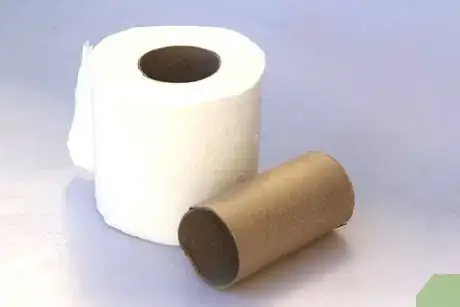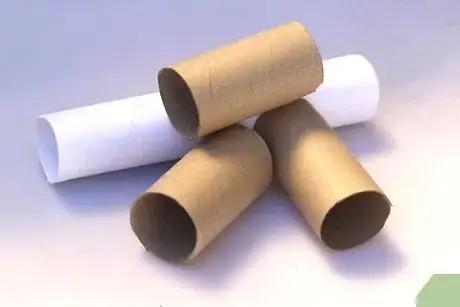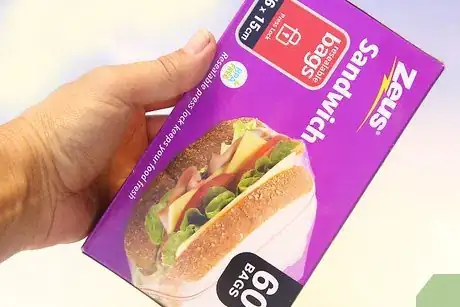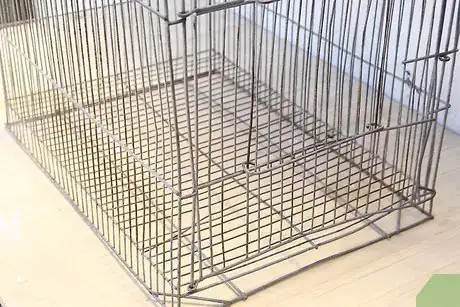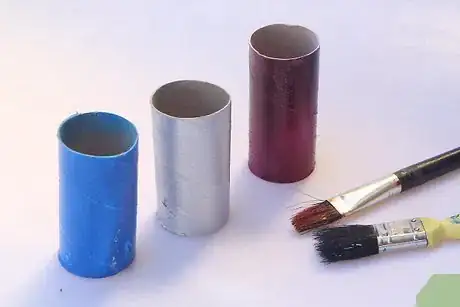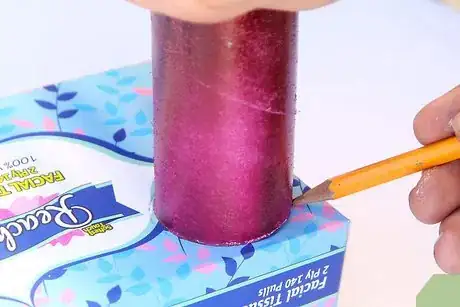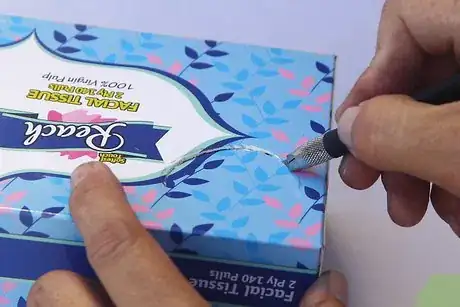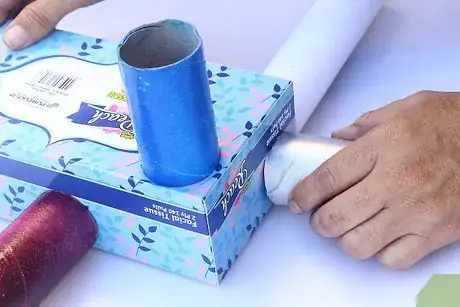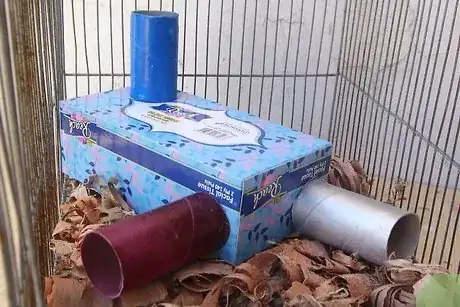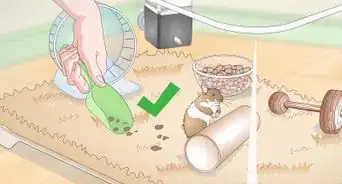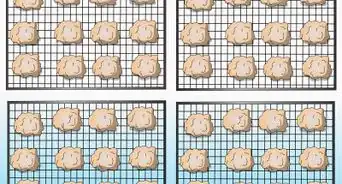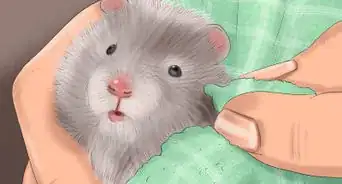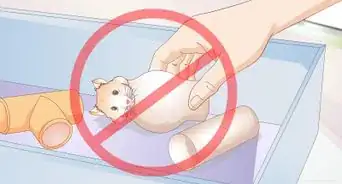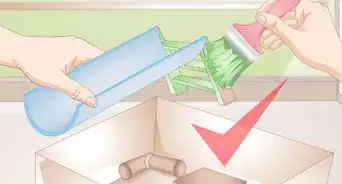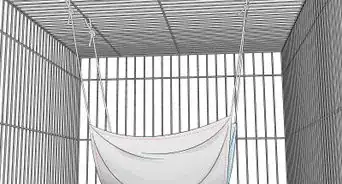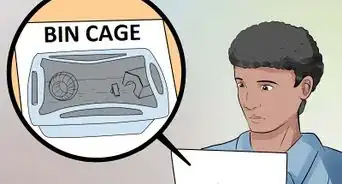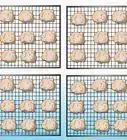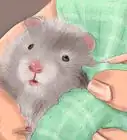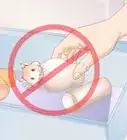This article was co-authored by wikiHow staff writer, Danielle Blinka, MA, MPA. Danielle Blinka is a Writer, Editor, Podcaster, Improv Performer, and Artist currently living in Houston, TX. She also has experience teaching English and writing to others. Danielle holds a Bachelor of Arts in English, Bachelor of Arts in Political Science, Master of Arts in English with a concentration in writing, and Master of Public Administration from Lamar University.
This article has been viewed 10,724 times.
Learn more...
Playing with your hamster is fun for both you and your hamster. Since hamsters love to tunnel and chew, making your pet play tubes will give it hours of enjoyment. Making play tubes for your hamster is really easy once you have your tubes selected. You’ll be able to make a customized play toy for your hamster, which can range from a simple maze to an intricate, decorated maze.
Steps
Choosing Your Tubes
-
1Save empty toilet paper rolls. Empty toilet paper rolls are great choices because they are large enough for most hamsters and are sturdy enough for them to crawl through. Toilet paper rolls make great connectors for your maze sections.
-
2Collect empty paper towel rolls. Empty paper towel rolls are good for making longer sections of the maze. Using the longer tubes can save you time when you’re assembling the tubes because you don’t have to tape as many tubes together to make your hamster’s toys.
- For longer tubes, you can also use a mailing tube if you can find one.[1] Another option is a wrapping paper roll.
Advertisement -
3Use tissue boxes to allow for burrowing. You can add onto your tubes using tissue boxes, which make a great spot to add burrowing materials or other toys to your hamster’s tube maze. Use the tissue boxes as the corner(s) or your maze by attaching tubes to two of the adjacent sides of the box.[2]
- Put bedding or shredded paper inside the tissue box so that your hamster can play in the box.
- Cover the open part of the tissue box with paper so that your hamster doesn’t crawl out.
-
4Try an oatmeal container. Oatmeal containers mix up the size of the tunnels and make it interesting for your hamster. You can either remove the bottom and lay it on its side, or you can stand up the oatmeal container and use it as a corner piece by cutting holes in the sides of the container and attaching tubes.[3]
Creating Your Maze
-
1Decide how much space you have for your maze. Choose a safe play area for your hamster maze, such a room where you already take out your hamster to play. If you are putting the tubes in your hamster’s cage, consider the smaller size of the cage, which may only fit one or two tubes.
- Consider sealing off the maze as best as you can so that your hamster has more room to run and play in it. You could even assemble the maze in a place like your bathtub, which would be harder to escape if you hamster makes a run for it. Just make sure to block off the drain and keep the water turned off.
-
2Design your maze. Set up the corners first, then line up the tubes how you’d like them to fit together. Include twists and turns so that your hamster will have fun exploring. Remember to allow space for your hamster to turn around.[4]
- You can create levels by elevating some of the tubes. One option is to create an offshoot from one of the tissue boxes that is higher off the ground. Balance the tube sections on blocks, cereal boxes, or a plank of wood.
- You can also create zig-zags to make things interesting for your pet.
- Try creating a maze with a specific theme in mind. You can arrange your tubes to look like something, such as a spiral, Christmas tree, or witch’s hat.
-
3Decorate your tubes if you want a fun look. Store-bought hamster tubes are often fun colors. If you want a similar look, you can paint your tubes using paint that is labeled as non-toxic. It’s best to do this before you tape the tubes together.[5]
- Try painting stripes or polka dots on your tubes.
- Alternatively, you could glue paper over the tubes using non-toxic glue.
- Choose a design or paint colors that go along with your theme. For example, use red and green for a Christmas-themed maze, orange and black for a Halloween-themed maze, or bright colors for a spiral.
Putting the Tubes Together
-
1Trace where you will cut holes into the boxes and tubes. To create offshoots and exits from the boxes or longer tubes, you will need to fit the ends of other tubes into the sides of the cardboard. For example, you may want to have two long tubes connected parallel to each other by a short toilet paper tube, which would require you to cut a hole in the side of both of the longer tubes.
- Place the end of the tube you are tracing against the place you want the hole. Trace the outline of the roll.
- Continue tracing until you’ve outlined all of your holes.
-
2Cut out the holes. Use craft scissors or a craft knife to cut out the traced holes.[6] Be careful not to make the holes too large since that could allow space for your hamster to squeeze out of the maze, or it could cause the maze to collapse while your hamster is playing inside.
-
3Fit and tape the tubes together. Insert any tubes that will go into holes in other tubes or the boxes, and then line up the remaining tubes end to end. Apply tape to the tubes, layering several pieces to make the maze sturdy. Your hamster will need to be able to scurry inside the tubes without the maze coming apart.[7]
- If a tube is going inside of a hole, make sure that there is not a lot of space around the tube. If there is, you can fill the space with pieces of paper towel or cover the space with extra tape.
- You can also wrap strips of paper over the places where the rolls meet, taping the paper in place. For example, two paper towel rolls could be joined by wrapping a sheet of paper around the rolls and taping the edges of the paper down.
Putting Your Hamster in the Maze
-
1Get your hamster out of its cage and place in in the play area. Stay with your hamster while it enjoys its new play tubes. Your hamster could easily get out of the tubes if left unattended.
-
2Put a treat at the end of the tunnel. Increase your hamster’s enjoyment of the tubes by enticing it with a small treat, such as a yogurt treat or a nut. Not only will your pet enjoy the treat, but it will also help the hamster figure out how to use the maze faster because it will smell the treat and go search for it.[8]
-
3Expect your hamster to shred the tunnel. Hamsters love to chew and shred, and cardboard is especially good for that. Your hamster will eagerly shred its new tubes, so don’t be mad when you see it chewing holes and tearing your construction apart. This is part of the fun for your hamster.
Community Q&A
-
QuestionCould I use empty water bottles instead of toilet paper tubes so I can keep an eye on my hamster?
 Sophie WalfordCommunity AnswerNot really. If your hamster chews the plastic, it will most likely cut their mouth. If they swallow it, it could potentially cut/rip their throat, stomach, etc. Cardboard turns soft when they chew it, so it's safer.
Sophie WalfordCommunity AnswerNot really. If your hamster chews the plastic, it will most likely cut their mouth. If they swallow it, it could potentially cut/rip their throat, stomach, etc. Cardboard turns soft when they chew it, so it's safer. -
QuestionI'm adopting a dwarf hamster. Would it be okay if I make a bigger maze for it?
 Community AnswerYou can make the maze as big as you want, provided you have enough space in the cage for it. In the 450 square inch minimum cage size (in the USA), having large toys can be difficult, as it tends to take up a lot of space.
Community AnswerYou can make the maze as big as you want, provided you have enough space in the cage for it. In the 450 square inch minimum cage size (in the USA), having large toys can be difficult, as it tends to take up a lot of space.
Things You'll Need
- Cardboard tubes in various sizes
- Craft scissors or knife
- Tape
- Pet safe paint (optional)
- Paint brush (optional)
References
- ↑ https://www.petcha.com/playtime-for-rabbits-guinea-pigs-hamsters-and-ferrets/
- ↑ http://animals.mom.me/build-hamster-toys-out-household-items-4565.html
- ↑ http://animals.mom.me/build-hamster-toys-out-household-items-4565.html
- ↑ http://animals.mom.me/build-hamster-toys-out-household-items-4565.html
- ↑ https://www.youtube.com/watch?v=MreUefYiSEs&feature=youtu.be&t=10
- ↑ https://www.youtube.com/watch?v=MreUefYiSEs&feature=youtu.be&t=184
- ↑ http://animals.mom.me/build-hamster-toys-out-household-items-4565.html
- ↑ https://www.petcha.com/playtime-for-rabbits-guinea-pigs-hamsters-and-ferrets/
About This Article
To make play tubes for your hamster, start by collecting empty toilet paper and paper towel rolls to make tunnels and connectors. You can also gather empty tissue boxes or oatmeal containers to create burrow spaces and corners for the maze. Next, line up the tubes in between the boxes and containers, and be sure to include twists and turns! Then, place each tube against the structure you want to connect it to, trace around the end of the tube, and cut out the holes. Finally, fit the tubes into the holes and secure them with several pieces of tape to make the maze sturdy. For tips on creating multiple levels for your maze, read on!
